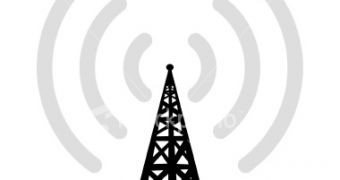After posting an opening for “Antenna Engineer” at its Job Opportunities site, Apple continues to receive bad press concerning the reception issues experienced by early adopters of the iPhone 4. This time around, a person most qualified to stress on the matter suggests that the problem is likely hardware-based. The cellular expert claims to be awaiting Apple’s official response to the issue “with interest”.
Richard Gaywood, an expert in cellphone technologies, points out to Apple’s take on the iPhone 4 reception issues, posting Steve Jobs’ statement: “Gripping any phone will result in some attenuation of its antenna performance, with certain places being worse than others depending on the placement of the antennas. This is a fact of life for every wireless phone.”
Richard explains that looking at the phone’s signal bars to determine whether or not it is getting good reception is not all that relevant: “The bars only indicate how well your phone can listen to the cell tower. They don’t tell you anything about how well the tower can receive your phone, but that’s a pretty important part of making a call”, he claims. After explaining that this “can vary from phone to phone and even between software releases on the same phone”, he makes it clear that “the signal strength bars are almost meaningless and should not be relied on.”
The proud holder of a Ph.D in wireless network planning techniques from Cardiff University allegedly ran a series of tests himself only to find that gripping the phone does impact reception. He notes that gripping it with a bare hand can cause radio performance to drop more severely than on other vendors’ phones. The reason? - “[other phones] don’t have electrically active components in contact with bare skin”, he explains, stating what has become the obvious by now. The iPhone 4, as our readers should know by now, features a steel frame that doubles as the GSM and WiFi antennae.
Gaywood does not believe a firmware update will fix Apple’s antenna issues, and doesn’t “feel” that the problem lies in the software. “I think there’s some deeper problem here, and I await Apple’s formal response to the issue with interest”, he relates. Another noteworthy assertion coming from Gaywood is that Apple’s suggestion to use a case means the company is indirectly “admitting there is something up with the iPhone 4”.
Softpedia note
Although Richard Gaywood touts himself as “fractionally more than Just Another Internet Dude on this subject”, he is still just one of many who are pinpointing Apple’s problems with the phone’s reception based on rather general knowledge in tight radio-tech circles. Before slamming Apple in the comments, readers should take a minute to consider that the phone’s makers themselves are likely well aware of the particularities surrounding these technologies. In fact, if there’s anyone who can successfully isolate the problems with the iPhone 4’s antenna, it’s still the technicians working long hours at One Infinite Loop, Cupertino, California.

 14 DAY TRIAL //
14 DAY TRIAL //